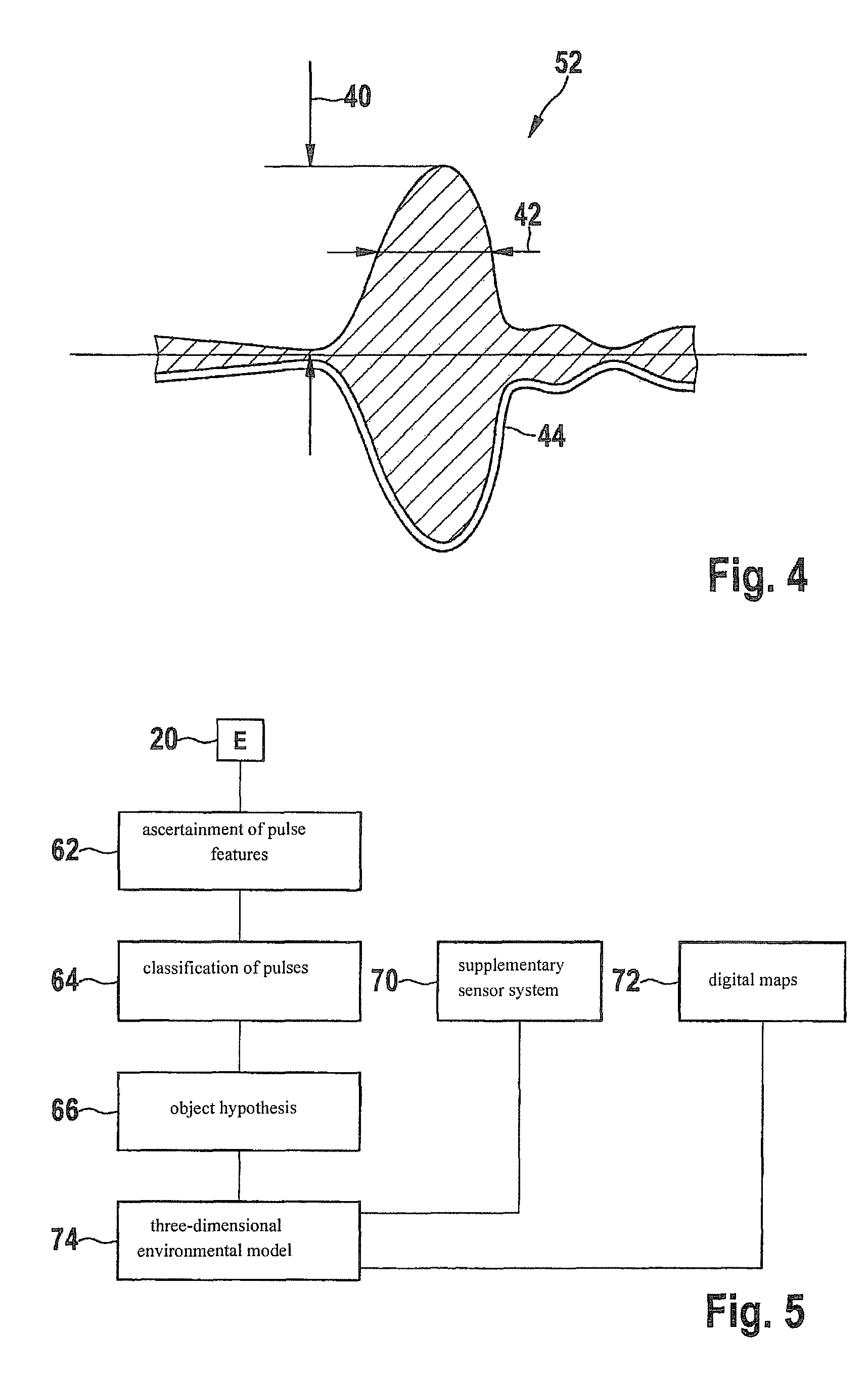Method for detecting objects
a detection method and object technology, applied in the field of devices and methods for detecting objects, can solve the problems of obtaining a substantial reduction in the overall information of the received signal, and allowing partial drops
- Summary
- Abstract
- Description
- Claims
- Application Information
AI Technical Summary
Benefits of technology
Problems solved by technology
Method used
Image
Examples
Embodiment Construction
[0023]FIG. 1 schematically shows a transmitter 10, for instance, for ultrasonic waves or electromagnetic waves, which emits a transmitting pulse 14 into a propagation space, in which there is an object 12. Transmitting pulse 14 may vary in its intensity, so that various amplitudes are able to be used. In addition, it is possible to emit various transmitting pulse lengths. Furthermore, the use of several transmitters 10 is conceivable, which emit transmitting pulses that are simultaneous or offset in time. A variation in the frequencies at which the transmitting pulses are emitted is also possible. In this context, setting up transmitters 10 is independent from a specified geographic position or of the corresponding receivers.
[0024]In FIG. 2, a receiver 20 is shown, for example, which is used for measuring reflection signals. An object 12, which is hit by a transmitting pulse 14, causes a reflected wave 22 which is radiated back into the propagation space. Receiver 20 is in a positio...
PUM
 Login to View More
Login to View More Abstract
Description
Claims
Application Information
 Login to View More
Login to View More - R&D
- Intellectual Property
- Life Sciences
- Materials
- Tech Scout
- Unparalleled Data Quality
- Higher Quality Content
- 60% Fewer Hallucinations
Browse by: Latest US Patents, China's latest patents, Technical Efficacy Thesaurus, Application Domain, Technology Topic, Popular Technical Reports.
© 2025 PatSnap. All rights reserved.Legal|Privacy policy|Modern Slavery Act Transparency Statement|Sitemap|About US| Contact US: help@patsnap.com



